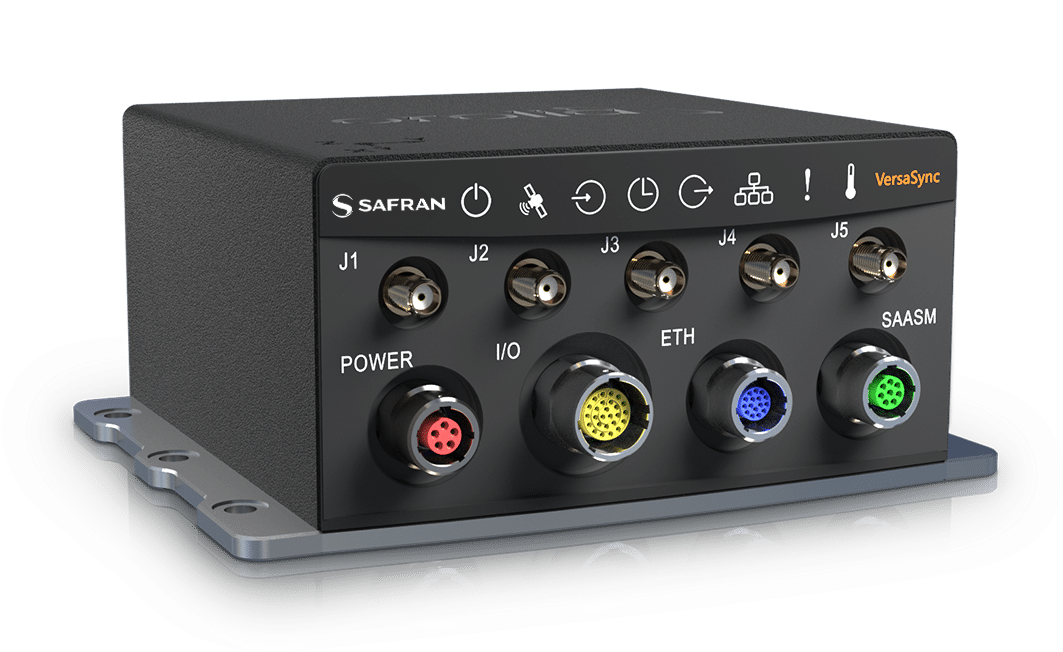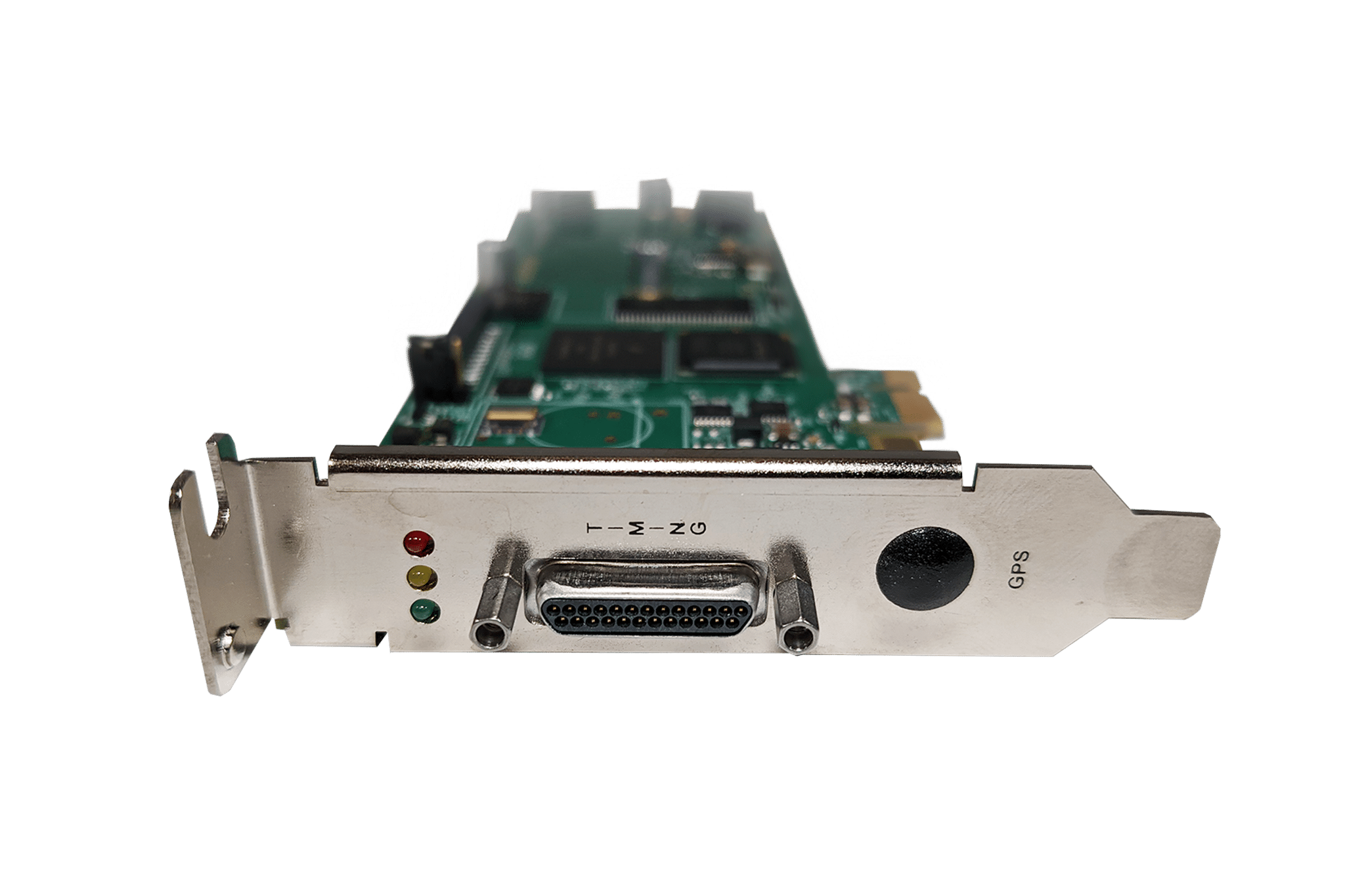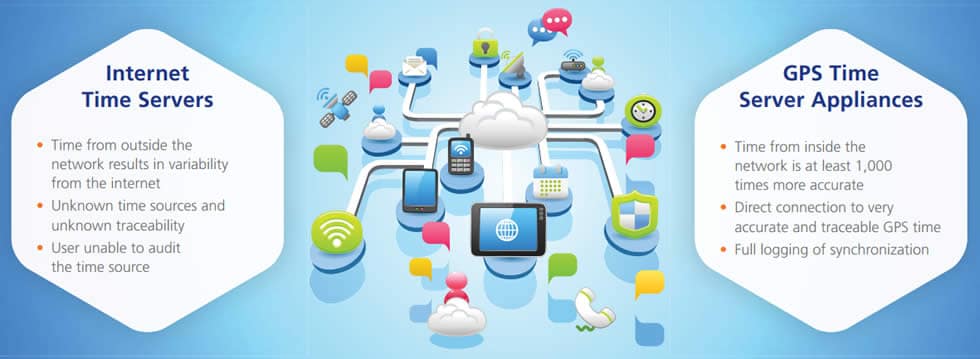Time Servers
Master Clocks and Timing Solutions
Precision timing is critical for defense, commercial industries, and powering essential network operations.
Safran offers network time servers and solutions for precise synchronization, security, compliance, and adherence to resilient timing best practices.
Whenever accuracy, safety, security and reliability are critical, Safran leads the way.
Why You Need An NTP Time Server
Time accuracy is paramount, and many network events, from process control to authentication, hinge on precise timing. Reliable timestamps and log files are crucial for billing systems, diagnostics, forensics, databases, and analysis. However, the internal clocks of electronic devices are often imprecise, drifting significantly over time. The solution is to employ network time synchronization.
Implementing network time synchronization is straightforward, relying on a designated NTPNTP, or Network Time Protocol, is a widely used networking protocol that enables computers and devices to synchronize their system clocks with a reference time source. It ensures accurate timekeeping in computer networks by allowing devices to obtain precise time information from NTP servers, which are typically synchronized to highly accurate atomic clocks. NTP is essential for various applications and services that rely on synchronized time, such as network security, authentication, and data logging. time server as the master clock and reference point. The choice of time server influences the security, reliability, accuracy, and manageability of the network time application, making it a critical decision for efficient network operations.

The SecureSync® Time Server
SecureSync, the most secure synchronized time solution on the market, incorporates customizable components in hardware, software, or system integration. This ensures you get exactly what you need while keeping the ownership costs to a minimum. Safran fully supports the implementation of PTPPrecision Time Protocol is a protocol used to synchronize clocks throughout a computer network. On a LAN network, PTP can enable the clocks on each server to be synchronized within a sub-microsecond range, thus making it suitable for demanding applications that require precise timing and control. PTP is standardized within IEEE-1588v2. grandmaster (IEEE-1588v2) for applications that require microsecond accuracy on networks and devices.
Discover why we’re the world leader in resilient timing.


White Rabbit: Sub-Nanosecond Timing
White Rabbit is a collaborative project including CERN (the European Organization for Nuclear Research), GSI Helmholtz Centre for Heavy Ion Research and other partners from universities and industry to develop a fully deterministic Ethernet-based network for general purpose data transfer and sub-nanosecond accuracy time transfer.


What Makes Network Time Synchronization Applications Secure, Reliable & Accurate
NTP Stratum Levels and Accuracy
Stratum levels are used to indicate the traceability path from the atomic clocks operated by national standards organizations. These “official time clocks” are defined as stratum-0 clocks as they are the most accurate. However stratum-0 time sources can not be used on a network. Stratum-1 time sources are directly traceable to national standards. Stratum-1 timing servers get their time by direct connection to atomic clocks through GPS transmissions, long-wave radio signals such as WWV, or dial-up modem.
Stratum-1 timeservers act as the primary network time standard. Stratum-2 servers get their time from stratum 1 sources, and so on. Higher stratum levels (stratum-2, stratum-3, stratum-4, etc) are deemed less accurate than their source due to transmission delays by about 10-100 milliseconds per stratum level. Typically NetClock NTP servers use the GPS broadcast as the primary source of official time, although other time sources can be used as primary or as back-up to GPS time as is the case with dial-up modem.
SecureSyncs are stratum-1 NTP server appliances that offer the accuracy, reliability and security that you need for an efficient and reliable network.

How a Time Server Supports Regulatory Compliance
Network time synchronization supports many laws and standards requiring network accuracy, security, and reliability. The following are examples of regulations that drive the need for time synchronization in the network.
| Regulation | Driver |
|---|---|
| Sarbanes-Oxley | Accuracy of financial reporting |
| HIPAA | Patient privacy in health care |
| Order Audit Trail System (OATS) | Elimination of fraudulent security trades |
| Gramm-Leach-Bliley | Customer privacy |
| CFR 21, Part 11 | Accuracy of electronic records for drug manufacturers and others |
| Payment Card Industry – Data Security Standards | Security of cardholder data |
| North American Electric Reliability Council (NERC) | Requirements for a reliable and secure bulk power system. |
Regulation Details
“SOX” requires top executives of public companies to personally certify the accuracy of financial reports. Section 404 requires an organization to assess internal control systems for accuracy. Typically you need to answer the following questions: who was in what system, what they did, why they were there, and how long they were there. The accuracy of log files and time stamps is important for the network control required to ensure compliance. Accurate time synchronization of the entire IT infrastructure supports SOX compliance.
HIPAA legislation was a wide ranging act to improve various aspects of the health care industry. In addition to ensuring portability and continuity of health insurance coverage, rules and standards have been added to ensure privacy of patient records and specifically for the security of health information. A network access control is crucial to show compliance to HIPAA. Accurate time stamps are particularly called out in the regulation as a contributing factor for appropriate access controls. Time synchronization of the network of health care providers helps ensure compliance to the HIPAA regulations.
National Association of Securities Dealers (NASD) order audit trail system (OATS) requires those involved with financial exchanges to track trades to within 3 seconds of the international time standard known as UTC, including latencies.
In an attempt to reduce identity theft, this 1999 law protects the privacy of customers of financial institutions. It is crucial that financial organizations take reasonable steps to secure the privacy of customer records from the inside and outside the network. Similar to other regulations, time synchronization of the business systems is an enabler for securing records such as customer data.
The code of federal regulations includes Food and Drug Administration’s guidelines for the development, manufacture and sale of products that can affect the health and safety of the public. Specifically title 21, part 11 requires businesses in certain industries such as pharmaceutical manufacturing to employ procedures and controls to ensure the authenticity, integrity and confidentiality of electronic records. To satisfy this requirement, organizations must ensure that computer generated time stamps are accurate.
PCI-DSS applies to all who store, process or transmit cardholder data. A requirement include data and time stamping with synchronized system clocks.
The Federal Energy Regulatory Commission (FERC) has backed NERC’s requirements for all users, owners and oeprators of the bulk-power system including mandatory cyber security standards. NERC’s Control System Working Group lists inadequate or non-existant digital forensic and audit trails as a top 10 vulnerabilty of the power grid. Top mitigation requirements include time synchronization of system logs and sequence-of-event recorders as described in Security Guideline for the Electricity Sector: Time Stamping of Operational Data Logs. Along with the benefits of new network applications, controls are required to ensure the accuracy and security of data. A NetClock time synchronization solution directly supports the mission of the network administrator.

